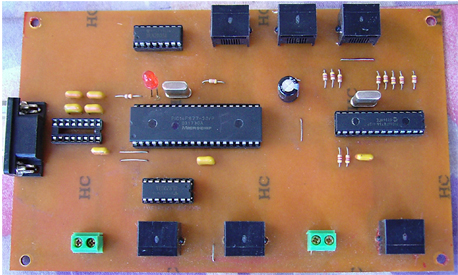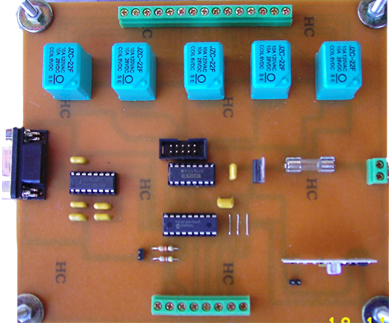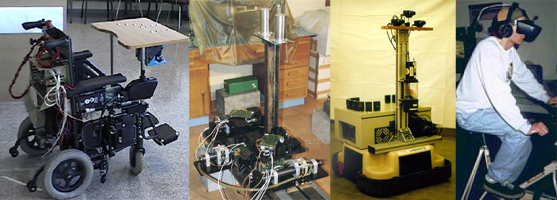
Tarabay Egypthas been providing systems and services to essential accounts in Egypt since 1999.
These systems and services represent a carefully cultivated relationship between
Tarabay Egyptand its clients, who are located throughout Egypt.
Tarabay Egypt is proud to have contributed to the growth and success of its' many satisfied customers.
Our support and services in the area of Training and Simulations Systems represents cutting edge technology, which is required and delivered to customers to meet their demanding environment and training challenges of the 1990's and 21st century.
The complexities of modern systems force many governments and businesses to rely on realistic training environments to prepare their personnel to confront any conceivable operating environment.
The combination of limited operating budgets, and even hazardous operating environments, necessitates that business and government procure state of the art training simulators and training systems are built.
Tarabay Egyptis proud of its' reputation in providing state of the art services, simulators and training systems in a host of different functional areas.
Tarabay Egyptis committed to provide the finest technology and services available for its clients.
Each client is valued and supported with a long term view for the clients' success. Each job, no matter how large or small, is approached as essential to the success of your business. Our success comes with customer satisfaction and success enhanced by our systems and services.
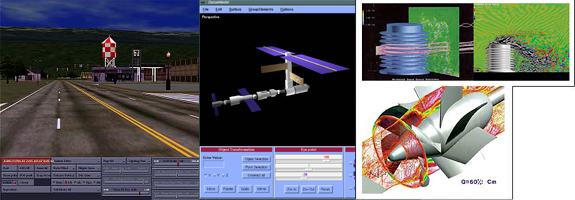
Simulation is a powerful tool for analyzing, designing, and operating complex systems.
It enables you to test hypotheses without having to carry them out, saving you thousands, even hundreds of thousands of dollars!
It is a cost-effective means of exploring new processes, without having to resort to pilot programs.
Simulation provides a method for checking your understanding of the world around you and helps you produce better results faster.
And it is an efficient communication tool, showing how an operation works while stimulating creative thinking about how it can be improved. Simulation Models.
A model is a logical description of how a system performs.
Simulations involve designing a model of a system and carrying out experiments on it as it progresses through time.
For example, the board game Monopoly is a model of a real system– the hotels and facilities of Atlantic City.
When you play Monopoly, you are simulating that system.
Simulation with Extend means that instead of interacting with a real system, you create a model which corresponds to it in certain aspects.
You can use a model to describe how a real-world activity will perform.
Models also enable you to test hypotheses at a fraction of the cost of actually undertaking the activities which the models simulate.
For example, if you are a hardware designer, you can use Extend to simulate the performance of a proposed system before building it.
One of the principal benefits of a model is that you can begin with a simple approximation of a process and gradually refine the model as your understanding of the process improves.
This “step-wise refinement” enables you to achieve good approximations of very complex problems surprisingly quickly.
As you add refinements, your model becomes more and more accurate.
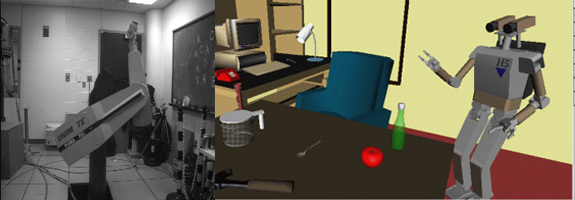
We use the most advanced s/w engine which provide fast and accurate solutions for linear, nonlinear, Continuous time, discrete time, time varying and hybrid system designs.
Modeling is a powerful tool. With it, you can analyze, design, and operate complex systems. You use models to assess real-world processes too complex to analyze via spreadsheets or flowcharts, testing hypotheses at a fraction of the cost of undertaking the actual activities. An efficient communication tool, modeling shows how an operation works and stimulates creative thinking about how to improve it. Models in industry, government, and educational institutions shorten design cycles, reduce costs, and enhance knowledge.
A model is a logical description of how a system, process, or component behaves.
Instead of interacting with the real system, you can create a model that corresponds to it in certain aspects.Simulation involves designing a model of a system and carrying out experiments on it. The purpose of these "what if" experiments is to determine how the real system performs and to predict the effect of changes to the system as time progresses.
For example, you use simulation to answer questions like:
- Will this change to our process result in higher yields/quality/revenues?
- How many people are required to maintain service at a specified level?
- Can we design this television with fewer components and still maintain picture clarity?
Static models describe a system mathematically, in terms of equations, where the potential effect of each alternative is ascertained by a single computation of the equation.
The variables used in the computations are averages.
The performance of the system is determined by summing individual effects.
Spreadsheets are static models.Static models ignore time-based variances.
For example, you can't use them to determine the impact of when something occurs in relation to other incidents.
Also, static models do not take into account the synergy of the components of a system, where the actions of separate elements can have a different effect on the total system than the sum of their individual effects would indicate.
Dynamic modeling (also known as simulation) is a software representation of the dynamic or time-based behavior of a system.
While a static model involves a single computation of an equation, dynamic modeling, on the other hand, is iterative.
A dynamic model constantly recomputes its equations as time changes.
Dynamic modeling can predict the outcomes of possible courses of action and can account for the effects of variances or randomness.
You cannot control the occurrence of random events.
You can, however, use dynamic modeling to predict the likelihood and the consequences of their occurring.
Dynamic modeling tools greatly facilitate the model-building process.
A good modeling tool is flexible enough to fit a specific project, company, or industry.
It should provide benchmark figures for comparing current "as is" processes to future "to be" processes, allow you to explore alternative approaches, help you determine how to prudently use resources, and show where to eliminate tasks that add no value.
Dynamic modeling tools abound.
They range from general purpose to specialized applications and from simulation languages to graphical simulators.
While early simulation models were developed in general purpose programming languages, simulators were soon developed to simplify model construction.
For example, a manufacturing simulator would include a "machine" component where the warm-up period and processing time could be entered as data, without programming.
While an improvement over languages, early simulators lacked programming capabilities and tended to be inflexible.
The current trend is to combine the ease of use of a graphical simulator with the flexibility of a language.
More recent entrants to the simulation field (such as Extend™, a product of my organization Imagine That, Inc.), are simulator/simulation language hybrids.
Whether language, simulator, or state-of-the-art hybrid, simulation tools are typically classified as either continuous, discrete event, or combined discrete event and continuous.
As seen in the table, the main difference between continuous and discrete event modeling is what is being modeled and how time is handled.
Continuous simulations are analogous to a constant stream of fluid passing through a pipe.
The volume may increase or decrease, but the flow is continuous.
In continuous models, values change based directly on changes in time.
These values reflect the state of the modeled system at any particular time, and simulated time advances evenly from one time-step to the next.
For example, an airplane flying on autopilot represents a continuous system since changes in state (such as position or velocity) change continuously with respect to time.
The time line for a continuous model is evenly spaced.
Modeling is a powerful tool. With it, you can analyze, design, and operate complex systems. You use models to assess real-world processes too complex to analyze via spreadsheets or flowcharts, testing hypotheses at a fraction of the cost of undertaking the actual activities. An efficient communication tool, modeling shows how an operation works and stimulates creative thinking about how to improve it. Models in industry, government, and educational institutions shorten design cycles, reduce costs, and enhance knowledge.
Combined applications (such as Extend) can model systems either discretely or continuously.
These hybrid applications combine all the features of both types of modeling.
Some systems, especially when a portion of the flow has a delay or wait time, can be modeled as either discrete event or continuous.
In this case, you choose how to model the system based on the level of detail required.
Discrete event models provide much more detail about the workings of a system than continuous models do
Whether discrete or continuous, the field of modeling is a fascinating one.
Simulations have played important roles in numerous areas for a long time.
Expect to see them combine with intelligent technology to produce exciting applications for the economies and the industries of the future.

Simulation provides a method for checking your understanding of the world around you and helps you produce better results faster.
A simulation program like Extend is an important tool that you can use to:
- Predict the course and results of certain actions.
- Understand why observed events occur.
- Identify problem areas before implementation.
- Explore the effects of modifications.
- Confirm that all variables are known.
- Evaluate ideas and identify inefficiencies.
- Gain insight and stimulate creative thinking.
- Communicate the integrity and feasibility of your plans.
- Integrated engineering analysis and verifications for electromechanical systems.
- Real time hardware –in-the-loop and man-in-the-loop simulation.
- Distributed interactive simulation and visual simulation.











